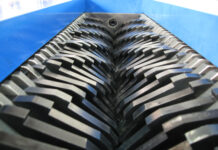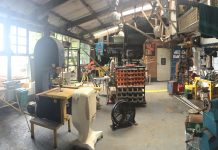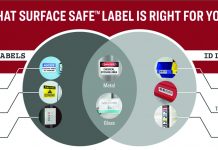
What does it mean to embody the phrase, “a good plater”? Often that phrase is considered an oxymoron, but there is one company that those words are not just a passing phrase.
From Jewelry Repair to High Technology
Founded in 1910 by Emmanual Cohan and his brother-in-law, Louis Epner, the Cohan-Epner Company began as a jewelry repair company. Plating, originally an incidental repair function, eventually became the primary focus of the business.
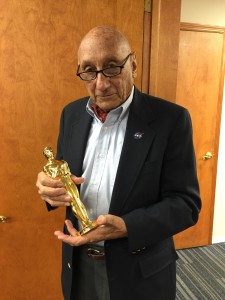
During the onset of the Second World War, the company morphed from its roots into a company with focus on high technology. David Epner, president of Epner Technology, was only a five-year-old boy, when the United States turned to the company to plate the so-called “microwave plumbing” of early radar components. This early warning system produced by America as part of the “Arsenal of Democracy”, allowed British Spitfire interceptors to remain grounded until enemy bombers were detected during the Battle of Britain.
In 1972, now Epner Technology went to their first trade show. At the Design Engineering Show in Chicago, an engineer from Xerox saw their booth and inquired if they would be able to plate an aluminum extrusion to withstand high temperatures. Xerox also had a secondary requirement. The plating would also have to have high infrared reflectivity. Having met both requirements, Epner Technology was on their way to becoming the primary plater for IR reflectivity.
Laser Gold® plating is Epner’s proprietary, pure, electrochemically deposited gold coating that combines the theoretical reflectivity and emissivity of gold, while achieving hardness of 180 Knoop, three times harder than ordinary 24 Kt gold. The name is derived from the near universal acceptance of the coating for Nd-YAG laser pump cavities.
Gold Standard for NASA
The company has been involved with space programs from the earliest GOES weather satellites to the cryogenic cooling systems on the James Webb Space Telescope Cameras. The ultra-high infrared reflectivity of the Laser Gold plating process is critical in maintaining temperature of the on-board instruments.
“The quality of the Laser Gold coating was incomparable,” Frank Groark, TRW Space & Technology (now Northrup Grumman) said in a testimonial, “but indeed that is what we have come to expect from Epner Technology over the years.”
“Your Epner gold coating, the polishing of the pipe and the Lambertian surface preparation for our prototype optical integrating cavity,” said Steve Somerstein, Lockheed Martin, “has produced a test fixture that has exceeded our performance requirements.”
“Many of these components that we gold plate, silver plate, and nickel plate are machined by a subcontractor to the Lockheed and Northrup Grumman’s of the world,” explains David Epner. “The machine shop gets the job, and then needs to find a “good plater”,” a phrase many of them consider to be an oxymoron.”
Epner Technology is renowned for getting the job done, and done correctly with tight deadlines, even unrealistic deadlines. Back in 2004, two engineers from NASA’s Goddard Space Flight Center visited the plating facility. Another plater had made two attempts to gold plate a beryllium housing but could not meet the high temperature bake testing required by NASA. This component was the heart of the Mercury Laser Altimeter. To make matters worse, Epner only had a matter of days to finish the project.
After receiving the part on Saturday, the team, working through the weekend, managed to return the component to NASA on Tuesday.
“Not only was the Laser Gold plating and masking on this critical component flawless,” said Roger L Counts, NASA-Goddard, “but it was delivered on time against an ‘impossible’ schedule.”
Without the efforts of Epner Technology, the mission might have missed the launch window.
And the Oscar® goes to…
For this years Oscar, The Academy of Motion Pictures Arts and Sciences intended to bring the iconic statue back to it’s original glory. Since 1982, the Oscar had been made of Britannia, a rather fancy name for tin. Originally cast in bronze, the Acadamy sought to bring back some of the sharper details of the of the 1929 statue.
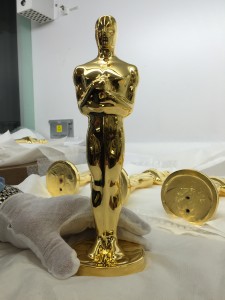
Polich Tallix was selected to manufacture the new statue. After 3D printing the design, a rubber mold was then made for the statue to once again have a core of bronze. The statues were then hand delivered to the only plater the Rock Tavern-based foundry supplier used.
“The ancient art of bronze casting technique,” described David Epner, “paired with a space-age process used on the Hubble and the James Webb Space Telescope, made strange bedfellows.”
The six hour process involved the coveted raw bronze awards polished, racked, electro-cleaned, copper plated, bright nickel plated, and finally immersed in the Laser Gold Plating tank. The final product has the strength and durability renowned for the Laser Gold process, as well as returning the statue back to its roots as a true art object.
A Shot at IMTS
While they have been to many other trade shows, including Optatec in Germany, this will be the first year that Epner Technology will have a booth at IMTS. There they will be showcasing their broad plating capabilities other than the precious metals. A NADCAP approved supplier for electroless nickel, tin, copper, cadmium and plating on plastics, are just a few of the other finishes they offer.
“It’s a shot in the dark,” said David Epner, “I got Xerox out of a show I never went into, so let’s see what happens.”
For more information on Laser Gold and Epner Technologies, visit www.epner.com









